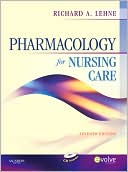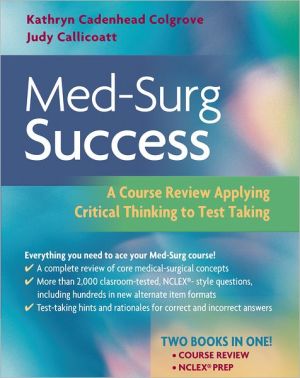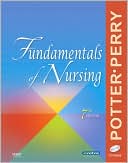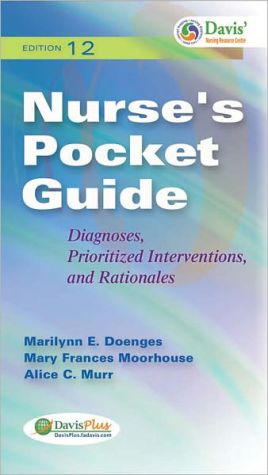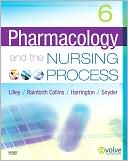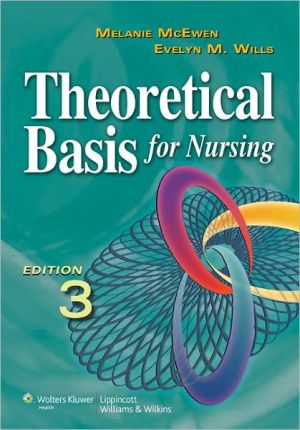High-Fidelity Patient Simulation in Nursing Education
High Fidelity Patient Simulation in Nursing Education is a comprehensive guide to developing and implementing a high-fidelity patient simulation in a clinical setting. It is a necessary primer for administrators and nursing programs starting out with this technology. It includes examples for setting up a simulator program for nurses, developing and implementing this technology into particular clinical and laboratory courses, and setting up refresher courses in hospital settings. The text...
Search in google:
High Fidelity Patient Simulation In Nursing Education Is A Comprehensive Guide To Developing And Implementing A High-Fidelity Patient Simulation In A Clinical Setting. It Is A Necessary Primer For Administrators And Nursing Programs Starting Out With This Technology. It Includes Examples For Setting Up A Simulator Program For Nurses, Developing And Implementing This Technology Into Particular Clinical And Laboratory Courses, And Setting Up Refresher Courses In Hospital Settings. The Text Features Appendices And Case Scenarios.
Preface xiiiContributors xviiUnit I Foundations 1Chapter 1 History of Simulation in Nursing Wendy M. Nehring 3Factors Influencing the Use of Simulation 3The Continuum of Simulation 8Conclusion 19Chapter 2 A Synthesis of Theory and Nursing Research Using High-Fidelity Patient Simulation Wendy M. Nehring 27Theoretical Frameworks Used in Nursing Simulation 27Nursing Research Involving High-Fidelity Patient Simulation 29Recommendations for Future Nursing Research 51Conclusion 53Unit II Setting up a Simulation Program 57Chapter 3 Developing and Implementing a Simulation Program: Baccalaureate Nursing Education Patricia Ravert 59The BYU Experience: Planning and Integration 61Suggestions for Successful Implementation 65BYU Evolution and Future Plans 73Chapter 4 Developing and Implementing a Simulator Program: Associate Degree Nursing Education Karen Mayes 75Environmental and Space Concerns 75Progress with Environmental and Space Concerns 77Faculty Education and Simulator Use 79Planning for a Second Set of Triplets 80Initial Costs 82Ongoing Costs 84Maintenance 84Student Involvement 84Evolution and Future Plans 85Chapter 5 Graduate Nurse Anesthesia Margaret Faut-Callahan Keith Marino Judith Wiley 87Introduction 87Enhancing Patient Safety 88Nurse Anesthesia Program Use of Simulated Learning 90Valid Outcome Measures/Evaluation Plans 91Clinical Simulation Consortia 92Role of Accreditation Agencies Related to Simulated Activities 93Simulation in Continuing Education and Credentialing 94Simulation in a Nurse Anesthesia Curriculum 95Summary 104Chapter 6 Statewide Nursing Simulation Program Jana F. Berryman 115Introduction 115Background: Statewide Nursing Simulation Program 117Staffing 118Equipment 121Environment and Space Considerations 127Evolution and Future Direction 130Chapter 7 Creating an Interdisciplinary Simulation Center Robert L. Kerner, Jr. 133Introduction 133Identifying the Need 133Identifying Stakeholders 134Establishing Goals 137Faculty Selection 138Faculty Development 140Curriculum Development 142Going Forward 146Chapter 8 An Interdisciplinary Simulation Training and Education Program for an All-Hazards Response Joy Spellman 149Introduction 149Center for Public Health Preparedness 149The Center for Public Health Preparedness at Burlington County College 150Planning: The Road to Preparedness 151What Are Simulators? 154Simulation Resource Management 156See How It Runs 159A Nurse Is a Nurse Is a Nurse...Not! 162Future Directions 163Chapter 9 Hospital-Based Competency Development Linda J. von Reyn 167Planning 167Number and Types of Personnel for Staffing 170Faculty Education 173Developing Scenarios 176Costs 176Environmental/Space Concerns 179Maintenance 180Involving Learners 181Continuing Education 182Evolution and Future Plans 182Acknowledgments 185Unit III Developing and Implementing Scenarios 187Chapter 10 Baccalaureate Nursing Education Deatrah Dubose Laurie D. Sellinger-Karmel Robert L. Scoloveno 189Incorporating Simulation into the Curriculum 190Development of Clinical Scenarios 192Orientation to High-Fidelity Patient Simulation 197Methods of Presenting the Scenario 198Evaluation of Clinical Scenarios 201Faculty Development 201Summary 202Appendix A Student Version of the Scenario of the Patient with a Cardiac Condition 205Appendix B Facility Version of the Scenario of the Patient with a Cardiac Condition 207Chapter 11 Associate Degree Nursing Education Kathy Carver Penny L. Marshall 211Place of Simulation in the Curriculum 211Evaluating the Student Using Simulation 212Identifying the Topic of the Scenario 213Why and How the Scenario Was Developed 214The Implementation Process 215Successes and Challenges 217Use of Simulation Using Different Levels of Fidelity 218Student Evaluations for the Simulation Experience 218Future Changes 219Advice for Faculty Who Want to Replicate the End-of-Life Scenario 220Appendix A End-of-Life Scenario 221Preparation for Patient Scenario 222Skills Required to Prepare for the Scenario 222Scenario Outline 223Debriefing 226Equipment Setup 227Scenario Background 228Chapter 12 Acute Care for Advanced Practice Nurses Karen S. Kesten Helen F. Brown Stephen Hurst Linda A. Briggs 233Selecting a Learning Scenario 234Determining a Framework for Problem Solving 237Scenario Development 247Student Preparation for Simulation 259Implementing the Simulation 261Optimizing the Simulation Environment 263Maintaining a State-of-the-Art Simulation Lab 268Challenges in Acute Care Advanced Practice Simulation 269Chapter 13 Regional Nursing Simulation Program Susan Sportsman Marcy S. Beck 273Statewide Collaboration 273Regional Collaboration 274Use of Collaboration to Develop Specific Scenarios 275Ensuring an Effective Simulation 298Appendix A Hyperglycemia Protocol (Subcutaneous Insulin Orders) 299Chapter 14 Interdisciplinary Simulation Center Marilyn McGuire-Sessions Paula Gubrud 303The Hospital-Based Interdisciplinary Simulation Center: Simulation for Practitioners 304The Academic-Based Interdisciplinary Simulation Center: Simulation for Students 305Interdisciplinary Infused High-Fidelity Clinical Simulation Scenarios 305Summary 321Chapter 15 Planning and Creating a Scenario: The Institute of Technical Education Experience Yvonne Lau Suppiah Nagammal Tan Khoon Kiat 323Identifying Developers 323Identifying Learners 324Identifying Learning Needs 325Identifying Learning Objectives 325Scenario Crafting 327Storyboarding 332Conclusion 339Chapter 16 Simulation in the Hospital Setting John M. O'Donnell Beth Kuzminsky 341Targets for Scenario or Course Development for Professional Nurses 342Developing Scenarios for Use within a Professional Nursing Simulation Course 343Scenario QuickView Tool 350The Development Triangle Tool 350Alpha Testing and Instructor Preparation 356Beta Testing: Scenario Flow and Final Content Validation 358Final Development Phase: Is The Scenario Ready for Use? 358Conclusion 358Appendix A Simulation Scenario: Hemolytic Blood Transfusion Reaction in The Acute Care Hospital Setting 363Student Level: Entry Level Professional Nurse (Orientation) to Experienced RN (Competency) 363Chapter 17 Facilitated Debriefing Judy Johnson-Russell Catherine Bailey 369Historical Origins of Debriefing 370Importance of Debriefing 370Effective Debriefing Techniques 378The Process of Verbal Debriefing 381Summary 384Chapter 18 A Curriculum for the Pre-licensure Nursing Program Thomas J. Doyle Kim Leighton 387Challenges Facing Nursing Education 388Pattern Recognition and Learning 389Simulation as a Teaching Strategy to Address These Challenges 391The Program for Nursing Curriculum Integration 391Simulation Across the Curriculum 394Conclusion 402Chapter 19 Evaluation Pamela R. Jeffries Angela M. McNelis 405The Evaluation Plan and Process 406Setting Up an Evaluation Plan 408Objectives/Information 413Problem Solving (Complexity) 415Student Support (Cueing) 415Debriefing (Guided Reflection) 416Evaluation Instrument 417Evaluating the Implementation of the Simulation 418Evaluating Student Learning Outcomes When Implementing Simulations 418Summary 421Unit IV The Future 425Chapter 20 Using High-Fidelity Patient Simulation: What Does the Future Hold? Felissa R. Lashley 427Index 433

